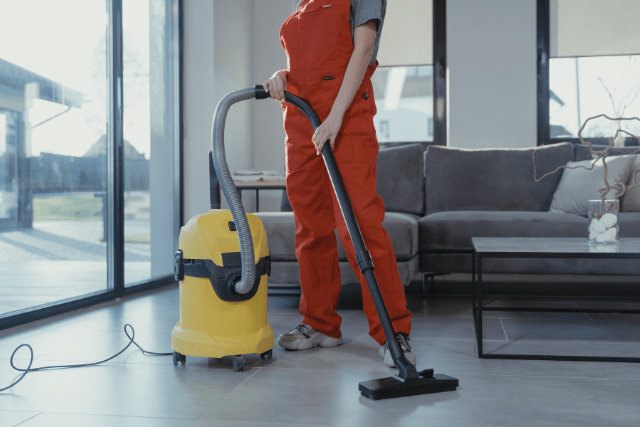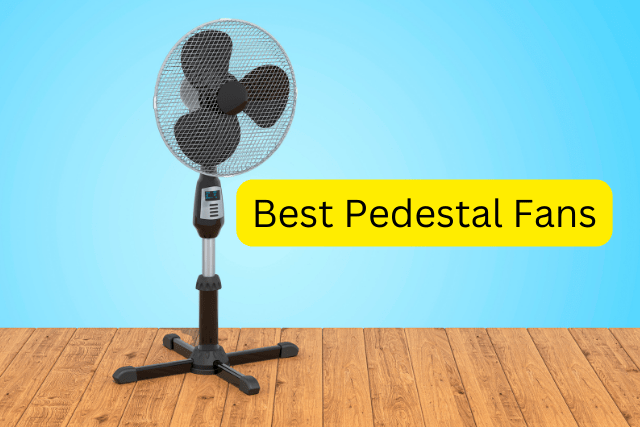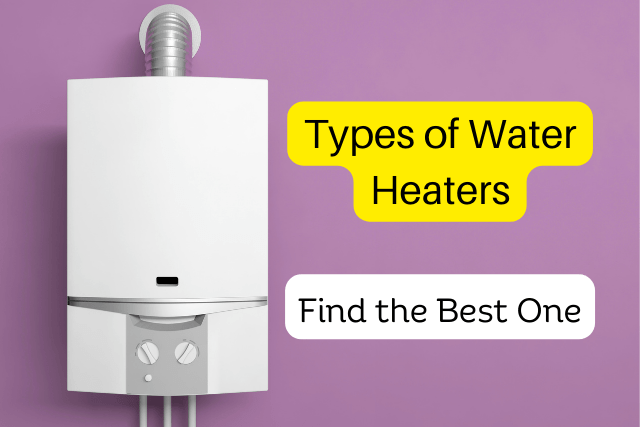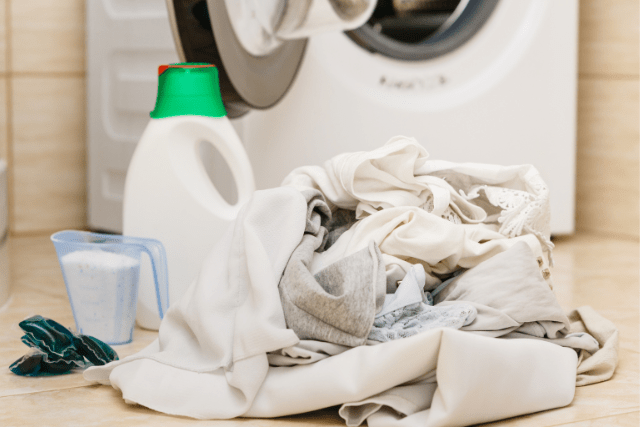Your vacuum cleaner is a reliable ally in keeping your home clean and comfortable. However, regular maintenance is crucial to ensure it continues to deliver peak performance and serves you well over the long haul.
Like any other household appliance, a well-maintained vacuum cleans more efficiently and lasts longer, saving you money and the hassle of frequent replacements.
So, if you’re ready to discover the secrets to vacuum cleaner maintenance, let’s get started!
Key Takeaways
- Regularly inspect and clean the intake, exhaust, wand, hose, and beater bar blockages to maintain optimal vacuum performance.
- Empty or change the vacuum bag regularly to prevent it from getting over three-quarters full and decreasing suction power.
- Clean the bin by removing it from the vacuum cleaner, emptying the contents, rinsing it with warm water and mild detergent, and allowing it to air dry completely.
- Take care of attachments, casing, hoses, and filters by regularly cleaning them with mild detergent and a damp cloth and replacing torn or dirty filters for optimal performance.
Understanding Vacuum Cleaner Basics
Before we jump into the nitty-gritty of maintenance, let’s take a moment to understand the basics of a vacuum cleaner. A vacuum is an essential tool for every household, designed to suck up dirt and debris from various surfaces.
Vacuum cleaners come in various types, including upright, canister, stick, and robotic, with unique features and advantages. Knowing the key components is crucial for effective maintenance, whether you have a bagless or a regular vacuum.
How Does a Vacuum Cleaner Work?
At its core, a vacuum cleaner creates a suction force that pulls dirt and dust into the machine. The main components include a motor, a fan, a filter system, and a dustbin or bag to collect debris.
Understanding these basic elements will help you appreciate the importance of regular maintenance in keeping your vacuum performing optimally.
Key components of a vacuum cleaner
Here are the components that require regular maintenance and repair:
- Filters: Vacuum cleaner filters are essential for trapping dust, dirt, and other particles as they pass through the vacuum. Over time, these filters can become clogged with debris, reducing suction and filtration efficiency. Depending on the manufacturer’s recommendations, filters should be cleaned or replaced regularly to maintain optimal performance.
- Brush Roll: The brush roll or beater bar is located in the vacuum’s cleaning head and is responsible for agitating carpet fibres and dislodging dirt and debris. Over time, the brush roll can become tangled with hair and debris, reducing effectiveness. It may also require occasional cleaning and belt replacement to maintain optimal performance.
- Belt: The belt that drives the brush roll can become stretched, frayed, or damaged over time, reducing the vacuum’s suction power. It should be inspected regularly and replaced if it appears worn or damaged.
- Hose and Attachments: The vacuum’s hose and attachments can become clogged with debris, reducing suction and making cleaning difficult. They should be checked regularly for blockages and cleaned to ensure proper suction.
- Dust Canister or Bag: For bagless vacuums, the dust canister should be emptied regularly to prevent it from becoming too full and reducing suction. The canister and seals should be cleaned periodically to prevent odours and maintain suction. For bagged vacuums, the bag should be replaced when full to prevent it from becoming too heavy and reducing suction.
- Seals and Gaskets: The vacuum’s seals and gaskets create a tight seal between the vacuum’s components, preventing air leaks and maintaining suction. Over time, these seals and gaskets can become worn or damaged, reducing suction and causing the vacuum to operate less efficiently.
- Power Cord and Plug: The power cord and plug can become damaged over time, reducing the vacuum’s ability to operate safely and efficiently. The cord should be checked regularly for kinks and fraying, and the plug should be inspected for damage.
- Motor and Fan: The vacuum’s motor and fan create suction and move air through the vacuum. Over time, dust and debris can accumulate on the motor and fan, reducing efficiency and causing the vacuum to operate less effectively. They may require periodic inspection and cleaning to maintain optimal performance.
How to Properly Maintain Your Vacuum Cleaner?
Correctly maintaining your vacuum cleaner is essential for efficient performance and a longer lifespan. Regularly checking for blockages, cleaning intake and exhaust parts, and emptying or changing vacuum bags are all critical steps to keep your vacuum running smoothly.
Regularly Check for Blockages
Regularly inspect your vacuum cleaner’s intake, exhaust, wand, hose, and beater bar for any blockages to ensure optimal performance and improved suction.
Blockages can significantly reduce airflow, decreasing suction power and inefficient cleaning. Regular maintenance is essential to inspecting these components to keep your vacuum cleaner functioning at its best.
Start by checking the intake and exhaust areas for any visible obstructions. These areas are prone to collecting dirt, debris, and even pet hair, restricting airflow and decreasing suction.
Use a flashlight to get a clear view of the inside and remove any blockages using a long, thin object like a wire hanger or pipe cleaner.
Next, examine the wand, hose, and beater bar for blockages. These parts often accumulate dust, hair, and other debris that can clog the airflow pathway. Detach the wand and hose and inspect them thoroughly. If you find any blockages, carefully remove the debris with a brush or fingers.
Check the beater bar for any wrapped-up hair or fibres. These can hinder its rotation and reduce suction power. Use scissors or a seam ripper to remove obstructions, ensuring the beater bar can spin freely.
Regularly inspecting for blockages is crucial for maintaining optimal suction and airflow in your vacuum cleaner. By incorporating this simple step into your regular maintenance routine, you can keep your vacuum performing at its best and achieve liberation from dirt and dust.
Clear Intake and Exhaust Blockages
Regularly check your vacuum cleaner’s intake and exhaust areas to ensure optimal airflow and suction power. Blockages in these areas can significantly reduce the efficiency of your vacuum.
Inspect the intake port, where dirt and debris enter the vacuum.
Look for clogs or obstructions and use a long, flexible object like a broom handle or wire hanger to clear them out.
Next, examine the exhaust port, where air is expelled. Remove blockages, such as accumulated dirt or debris, by gently tapping or shaking the vacuum.
It’s also important to check the wand, hose, and beater bar for blockages. Clear any hair, fibres, or other obstructions using scissors or a seam ripper.
Also, don’t forget to clean or replace the vacuum filters regularly to maintain optimal performance. Clogged filters can restrict airflow, reducing suction power.
Follow the manufacturer’s instructions for cleaning or replacing the filters, and ensure they are scorched before reinserting them.
Clean Wand, Hose, and Beater Bar
Regularly clean the wand, hose, and beater bar to ensure optimal vacuum performance. These components can accumulate dirt, debris, and hair over time, hindering suction power and efficiency.
| Component | Cleaning Steps | Frequency |
|---|---|---|
| Wand | Wipe the wand with a damp cloth to remove any dust or dirt. Pay attention to the crevices and corners. | Once a month |
| Hose | Remove the hose from the vacuum and check for any blockages. Use a long, flexible brush or a straightened wire hanger to remove debris. Rinse with water if necessary. | Once every three months |
| Beater Bar | Please turn off the vacuum and unplug it. Use scissors or a seam ripper to carefully cut away any hair or fibres wrapped around the beater bar. Remove any debris using a brush or cloth. | Once a month |
Regularly cleaning these three components will help maintain optimal vacuum performance and prevent any clogs or obstructions that may affect suction power. Make it a part of your regular cleaning routine to ensure your vacuum cleaner remains in top-notch condition.
Empty or Change Vacuum Bags Regularly
Ensure optimal vacuum performance by regularly emptying or changing the vacuum bag. Empty or change vacuum bags regularly to maintain effective cleaning and prevent a decrease in suction power. Here’s what you need to know:
- Don’t rely solely on the bag indicator light. Even if it isn’t complete, check the bag after each use.
- Avoid letting the bag get more than three-quarters full to prevent reduced efficiency.
- Empty or change the vacuum bag regularly; don’t wait until it’s complete.
- A whole bag can decrease suction power, making it harder for your vacuum cleaner to pick up dirt and debris.
Regularly emptying or changing the vacuum bag is crucial for optimal cleaning performance. It prevents a decrease in suction power and ensures that your vacuum cleaner can effectively remove dirt and debris from your floors and carpets.
So, make it a habit to check the bag after each use and empty or change it as needed. Doing so will keep your vacuum cleaner running smoothly and efficiently, allowing you to achieve a cleaner and healthier home.

Don’t Rely Solely on Bag Indicator Light
For accurate monitoring of your vacuum bag’s fullness, it’s important not to rely solely on the bag indicator light. While the indicator light can be helpful, it’s not always accurate and may not correctly indicate when your bag needs to be emptied or changed.
To ensure optimal performance of your vacuum cleaner, it’s best to check the bag after each use and not let it exceed three-quarters of the total.
Regularly emptying or changing the vacuum bags is essential to prevent a decrease in suction power. Depending on your usage, emptying the dust canister or changing the vacuum bags weekly is recommended. This will help maintain the efficiency of your vacuum cleaner and ensure it continues to pick up dirt and debris effectively.
In addition to checking the bag, it’s also essential to clean the washable filters regularly. These filters play a crucial role in trapping dust and allergens, so cleaning them will help maintain the performance of your vacuum cleaner.
Use mild detergent and a damp cloth to clean the filters, and make sure they are scorched before reassembling.
Clean the Bin After Each Use
Clean the bin of your vacuum cleaner after each use to maintain its performance and prevent the buildup of dirt and debris. Regularly emptying the bin ensures your vacuum cleaner can continue picking up dirt and maintain optimal suction power.
Here’s what you need to do:
- Remove the bin from the vacuum cleaner: Most vacuum cleaners have a release button or latch to remove the bin from the central unit easily.
- Empty the contents: Take the bin to a garbage can or outside area and carefully empty the dirt and debris into the trash. Be sure to dispose of it properly.
- Rinse the bin: Use warm water and a mild detergent to clean the bin thoroughly. Pay attention to any corners or crevices where dirt may accumulate.
- Allow the bin to dry: After rinsing, let the air dry completely before reassembling it. This will prevent any moisture from causing mould or unpleasant odours.
- Check for any clogs: While the bin is removed, take the opportunity to inspect the vacuum cleaner for any blockages. Clear any clogs in the intake or exhaust portions to ensure proper airflow.
Take Care of the Beater Bar
After properly cleaning the bin of your vacuum cleaner, it’s essential to take care of the beater bar to ensure optimal cleaning performance. The beater bar, or the brush roll, is responsible for agitating the carpet fibres and loosening dirt and debris for effective cleaning.
Here are some tips to maintain your vacuum cleaner’s beater bar:
- Regularly check the beater bar for wrapped-up hair or fibres.
- Use scissors or a seam ripper to remove obstructions on the beater bar.
- Ensure the beater bar brush is effective for optimal cleaning performance.
- Clean the beater bar brush from the vacuum cleaner and gently remove any debris.
- Replace the beater bar brush if it becomes worn or damaged.
Clean the Filter and Attachments Regularly
Regular vacuum cleaner maintenance includes cleaning the filter and attachments regularly to ensure optimal performance. Neglecting to clean these components can result in decreased suction power and poor cleaning results. Here are some essential steps to follow:
- Clean the filter regularly: The filter is responsible for trapping dust and allergens, so it’s crucial to keep it clean. Remove the filter according to the manufacturer’s instructions and gently tap it to remove any loose debris. Rinse it under running water and allow it to dry completely before reinserting it.
- Take care of attachments: Attachments such as crevice tools and brush heads can accumulate dirt and debris over time. Clean them regularly using mild detergent and a damp cloth. Please pay special attention to any bristles or brushes, ensuring they are free from tangled hair or fibres.
- Maintain the casing and hoses: Wipe down the casing and hoses of your vacuum cleaner with a damp cloth and mild detergent. This will help remove dirt or grime that may restrict airflow and cause blockages.
- Replace worn-out attachments: Inspect your attachments regularly for any signs of wear or damage. If you notice any tears or excessive dirt buildup that cannot be cleaned, it’s time to replace them with new ones.

Use Mild Detergent for Cleaning
When maintaining your vacuum cleaner, mild detergent must be used to clean the filter and attachments to ensure they remain undamaged and effective. Using harsh cleaning agents can cause damage to delicate materials and reduce the performance of your vacuum cleaner.
You can effectively remove dirt and debris using mild detergents without compromising the quality of your filter and attachments.
Benefits of Using Mild Detergent for Cleaning
- Prevents damage to the filter and attachments
- Ensures the longevity of your vacuum cleaner
- Maintains the effectiveness of the filter
Using mild detergent is simple. Mix a small amount of detergent with water and use a damp cloth to clean the filter and attachments. Gently scrub the surfaces to remove any dirt or grime. Rinse thoroughly and allow them to air dry before reassembling.
Replace Torn or Dirty Filters
Regularly replacing torn or dirty filters in your vacuum cleaner is crucial to ensure optimal performance and maintain clean air quality. Neglecting to replace damaged or dirty filters can reduce suction power and poor air quality.
Here are some maintenance tips for replacing filters in your vacuum cleaner:
- Regularly check filters for tears, damage, or excessive dirt buildup. Inspect both the pre-motor and post-motor filters, as they are vital in trapping dust and debris.
- Replace filters if they are torn, deteriorated, or excessively dirty for optimal performance. A clogged or torn filter can hinder airflow, reducing the cleaning efficiency of your vacuum cleaner.
- Clean washable filters every three months and replace non-washable filters as needed. Follow the manufacturer’s instructions for proper cleaning and replacement.
- Remember to replace the bag, as a full bag can impede suction power. Check the bag after each use and keep it no more than three-quarters full.
- Follow the manufacturer’s recommendations for filter maintenance based on usage and type of vacuum cleaner. Depending on their design and functionality, some vacuum models may require more frequent filter replacements.
Frequently Asked Questions (FAQs)
How often should I maintain my vacuum cleaner?
To maintain your vacuum cleaner effectively, it is recommended to perform basic maintenance tasks, such as cleaning the filter and brush roll, after every 3-4 uses. However, you should also conduct more thorough maintenance at least once a month to ensure optimal performance and longevity.
What are some important vacuum cleaner maintenance tips?
Several vacuum cleaner maintenance tips can help keep your appliance in top condition. It is crucial to regularly inspect the hose for clogs, clean or replace the filter, and use a damp cloth to wipe down the exterior. Additionally, checking for proper suction and cleaning the brush roll are essential tasks.
How should I store my vacuum cleaner?
To store your vacuum cleaner properly, make sure to unplug it first. If it has a bag, consider replacing it before storage. For a bagless vacuum, empty the container and clean any accumulated debris. Lastly, store the vacuum in a clean and dry area to prevent damage.
What are the best practices for using a vacuum cleaner?
When using the vacuum cleaner, it is crucial to ensure that the airflow is not obstructed and to check for blockages regularly. Always use the appropriate attachment for different surfaces, especially in areas with carpet. Moreover, it’s important to avoid running the vacuum over large debris that could cause damage.
How often should I replace the bag in my vacuum cleaner?
The frequency of bag replacement depends on how often you use your vacuum and how much dust and debris it picks up. Generally, bags can last for several months before needing to be replaced.
Conclusion
Regular maintenance ensures your vacuum cleaner operates at its best and has a long service life. By paying attention to key components such as filters, brush rolls, belts, hoses, and the dust canister or bag, you can help maintain optimal suction power and filtration efficiency.
Also, inspecting and servicing the vacuum’s seals, gaskets, power cord, and motor can prevent performance issues.
Following these maintenance tips and promptly addressing any necessary repairs, you can enjoy the benefits of a clean and healthy home environment while maximizing the lifespan of your vacuum cleaner.







